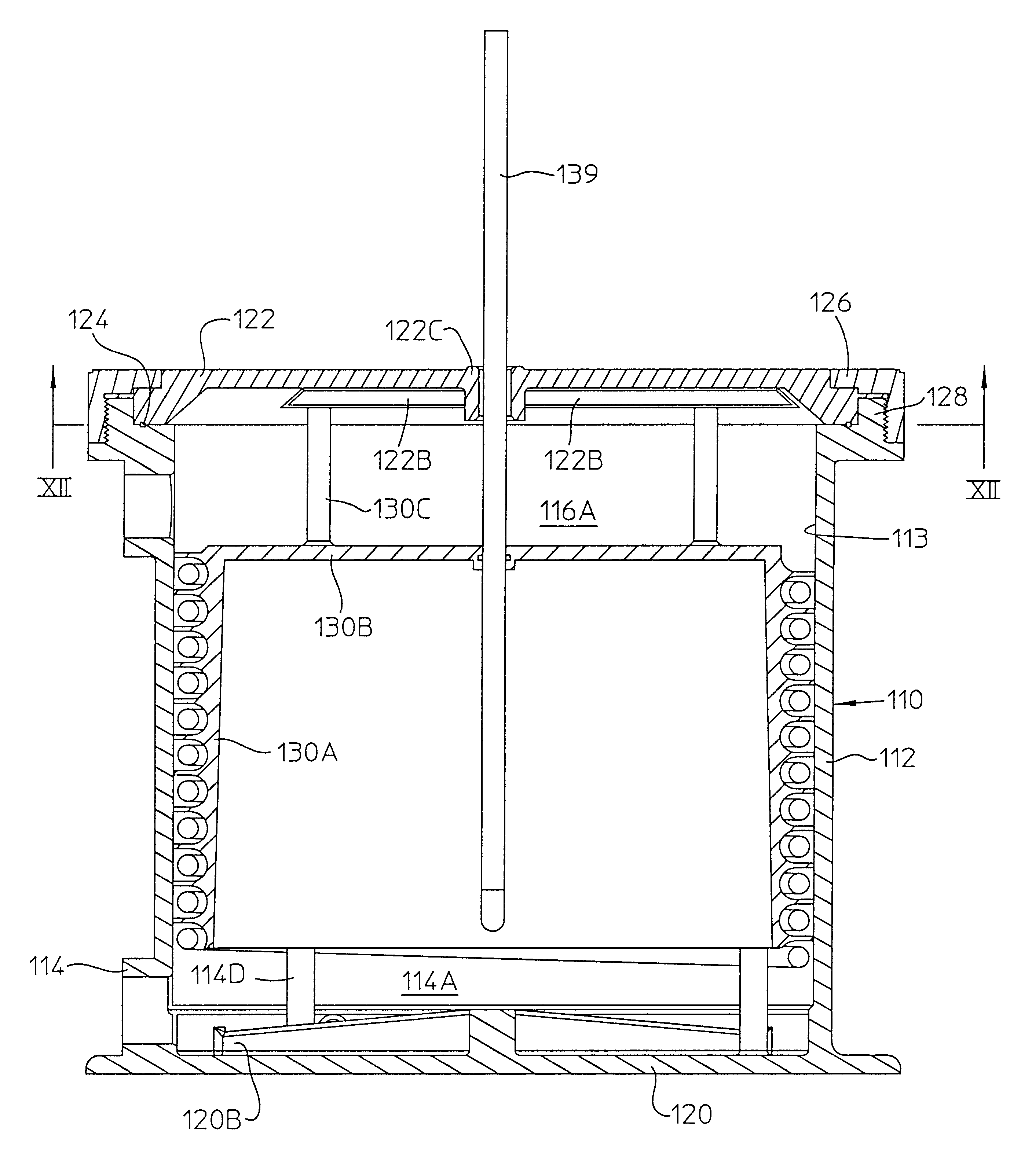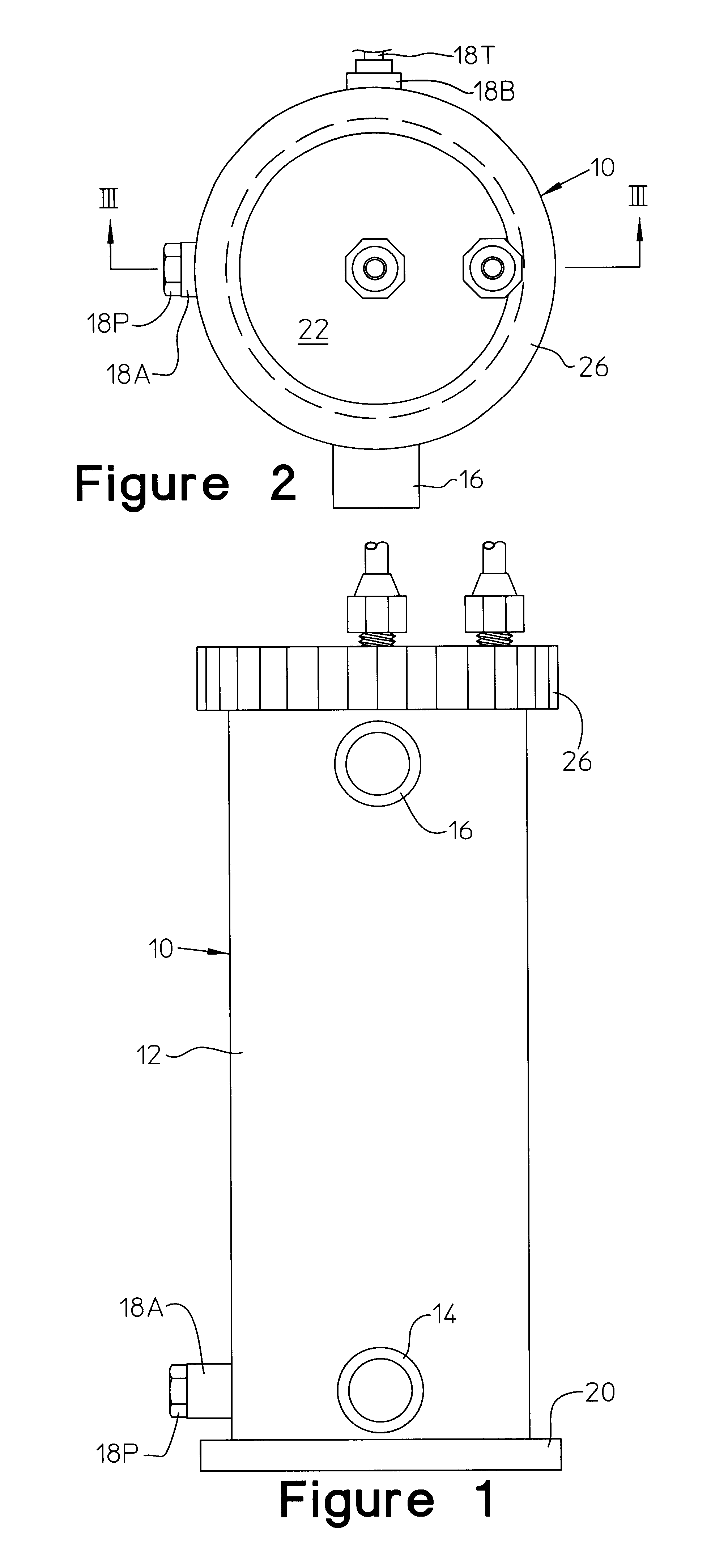Method and apparatus for optimizing heat transfer in a tube and shell heat exchanger
a heat exchanger and tube technology, applied in the field of heat exchangers, can solve the problems of copper heat transfer tubes, costing a lot of fabrication, and limited use of such heat exchangers as water heaters
- Summary
- Abstract
- Description
- Claims
- Application Information
AI Technical Summary
Benefits of technology
Problems solved by technology
Method used
Image
Examples
Embodiment Construction
Referring to FIGS. 1-4, there is shown a first embodiment of a heat exchanger 10 embodying a construction and the arrangement of parts useful to form an evaporator unit or condenser unit for diverse applications including water heaters, water coolers particularly, for swimming pool water of swimming pools, spas, aquariums (both fresh and salt water), a heat exchanger for marine engines and heat pumps. The heat exchanger includes a cylindrical outer shell 12 providing a cylindrical internal face surface 13. The shell 12 has a fluid inlet port 14 located adjacent the bottom of the shell through which a first fluid medium such as water is introduced into a supply chamber 14A of the heat exchanger and a fluid outlet port 16 located adjacent a discharge chamber 16A at the top of the shell from which the water exits the heat exchanger. The fluid inlet port 14 and fluid outlet port 16 each have a central axis oriented to extend radially and intersecting with a central longitudinal axis of ...
PUM
 Login to View More
Login to View More Abstract
Description
Claims
Application Information
 Login to View More
Login to View More - R&D
- Intellectual Property
- Life Sciences
- Materials
- Tech Scout
- Unparalleled Data Quality
- Higher Quality Content
- 60% Fewer Hallucinations
Browse by: Latest US Patents, China's latest patents, Technical Efficacy Thesaurus, Application Domain, Technology Topic, Popular Technical Reports.
© 2025 PatSnap. All rights reserved.Legal|Privacy policy|Modern Slavery Act Transparency Statement|Sitemap|About US| Contact US: help@patsnap.com



